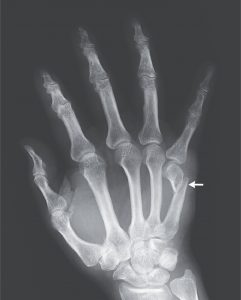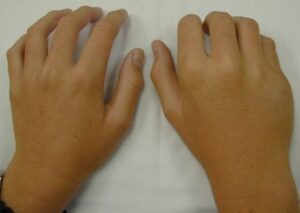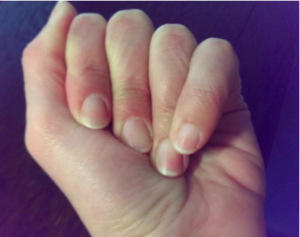The boxer’s fracture is a fracture of the 5th metatarsal (little finger side). As this is obviously not the target area of contact with a punch, this injury is often caused by suboptimal punching technique. In a typical punch, the knuckles of the 2nd and 3rd rays should make contact, allowing for a smooth transfer of force across the joint. However, when contact is made with the 4th or 5th rays, it causes a bending force through the bone.
Boxer’s fractures occur acutely, and the athlete will experience localised pain to the area, which will frequently be accompanied by swelling and some visual deformation. With closing of the fist, the little finger may cross over the other fingers. Movement of the little finger in particular will be painful.
For stable fractures with less than 70 degrees of angulation, the injury can often be managed conservatively with splinting for 4 to 6 weeks with the metacarpophalangeal joint (knuckle) flexed to 70 degrees.
Fractures involving shortening or rotation of the bone, as well as intra-articular fractures (fractures occurring within the joint space) will likely do better with surgical management. Long-term outcomes with metacarpal fractures have been shown to be better with intramedullary pinning (inserting a pin lengthwise through the bone) as opposed to transverse (sideways) pinning (1). Another important aspect of the surgical process is that the bone length is restored as much as possible, as a shortening in bone length is likely to negatively impact punching mechanics. Even following surgical repair, a visible deformity of the bone is likely to remain.


